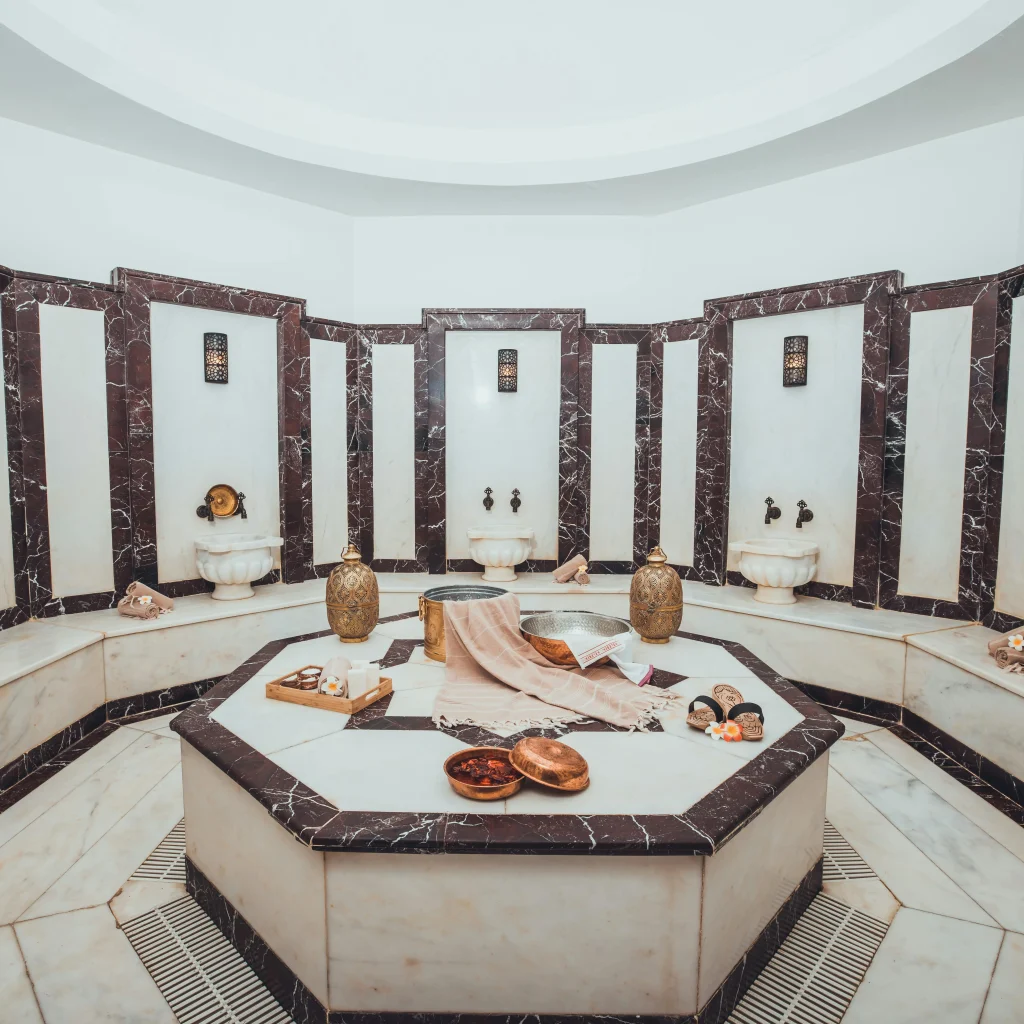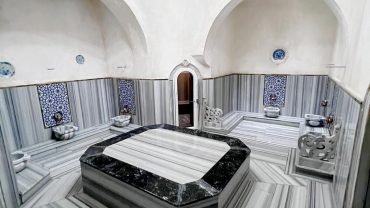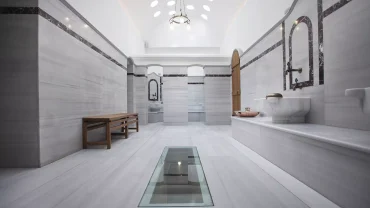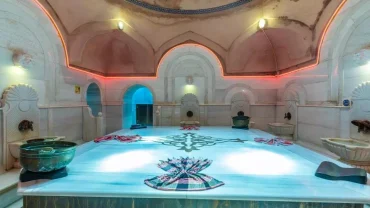Istanbul’s Iconic Hammams: The Zenith of Global Bathhouse Culture
The enduring human ritual of purification and communal bathing has left a profound architectural and cultural legacy across the globe. From the steamy confines of a Finnish sauna to the serene hot springs of Japan, bathhouses serve as vital social, spiritual, and physical havens. Among these diverse traditions, the Istanbul Turkish Bath, or Ottoman Hammam,
stands as a spectacular, highly refined expression of this ancient practice. This in-depth, SEO-optimized comparison will meticulously explore the distinctions, architectural features, and ritualistic differences between the grand historic Hammams of Istanbul and their global bathhouse counterparts, demonstrating why the Turkish Bath represents the pinnacle of this tradition.
I. The Universal Roots of Public Bathing
The concept of the public bath is not unique to the Middle East or Turkey. It is a universal inheritance, deeply influenced by two major forces: Roman engineering and Islamic spiritual requirements.
A. Roman and Byzantine Foundations
The earliest blueprints for the Turkish Hammam originate with the monumental thermae of the Roman Empire. These complexes were sophisticated hubs for exercise, social discourse, and cleansing, featuring a progression of temperature rooms:
- Frigidarium: The cold room for a final plunge.
- Tepidarium: The warm room, acting as a transition.
- Caldarium: The hot room, where sweating occurred.
Following the Roman decline, the Byzantine Empire preserved and adapted these structures, providing a direct architectural link to the later Islamic bathhouses.
B. The Islamic Imperative for Purity
The spread of Islam from the 7th century onward gave the bathhouse new spiritual significance. The need for ghusl (full ritual purification) and wudu (partial ablution) before prayer transformed the existing bath structures into integral parts of mosque complexes and civic life. The focus shifted from immersion in pools (common in Roman times) to washing with running water, a practice consistent with Islamic law and health considerations.
II. The Distinctive Architecture of the Istanbul Hammam
The historic Hammams of Istanbul, largely commissioned by Ottoman sultans and viziers, are distinguished by their monumental scale, sophisticated thermal engineering, and artistic opulence—qualities that set them apart from most other global bathhouses.

A. Architectural Masterpieces of the Ottoman Era
Ottoman architects, most notably Mimar Sinan, elevated the Hammam into a high art form. The buildings are characterized by symmetry, domed ceilings, and the use of gleaming marble.
- The Three-Part Thermal Progression:
- Camekan (The Undressing/Cooling Hall): The magnificent entrance, a grand, high-domed hall designed to impress and provide a space for relaxation post-bath. Often the largest room.
- Sogukluk (The Intermediate/Warm Room): A crucial transitional zone, preventing thermal shock and preparing the body for the heat.
- Hararet (The Hot Room): The heart of the ritual, a symmetrical space with high domes pierced by glass “elephants’ eyes” (oculi) to create a mystical, dappled light.
- The Engineering Marvel of the Goebek Tasi: The central, raised marble platform (Goebek Tasi or “Navel Stone”) is positioned directly over the kuelhan (furnace), ensuring intense, deep heat. This heated marble slab is the core of the passive sweating ritual, a feature unique to the Turkish tradition in its prominence.
B. Global Bathhouse Architecture in Contrast
The architectural style and scale of other global bathhouses tend to differ markedly:
- Moroccan Hammams: Often smaller, more intimate, and primarily functional with a focus on simple, earthy materials and intricate tiling. They tend to have a less grand, neighborhood-centric feel.
- Persian Garmaba: Frequently semi-subterranean to aid in insulation and heat retention, with a strong emphasis on elaborate tiling and a unique, convoluted entrance path to keep the heat inside.
- Finnish Sauna: Characterized by simple, small wooden rooms and a focus on dry heat and minimalism. Architectural beauty is secondary to functionality.
- Russian Banya: Rustic wooden structures, often with a large stove where water is poured onto hot rocks (kamenka) to generate steam. The design is utilitarian, supporting the vigorous bathing ritual.
III. Ritual: Istanbul’s Formal Cleansing Ceremony
The Turkish Bath experience is defined by a structured, formalized ritual and the essential role of the attendant, which distinguishes it from the more generalized cleansing found elsewhere.
A. The Professional Service: Tellak and Natir
The core of the Istanbul experience is the professional service provided by the attendant: the tellak (for men) or natir (for women). This is a professional skill set dedicated to full-body purification.
- Key Ritualistic Stages:
- Passive Heating: Spending time on the warm Goebek Tasi to induce deep perspiration and open the pores.
- The Kese Exfoliation: The attendant uses a coarse, silk mitt (kese) to vigorously scrub the skin, a uniquely intense and deeply effective method for removing dead skin cells and toxins.
- The Foam Massage: The body is then washed and massaged using a voluminous cloud of soap suds generated from traditional olive oil soap, often performed with theatrical flair.
- Rinsing and Transition: A final dousing with cool water, often from a decorative marble basin (kurna), and a gradual return to the camekan for relaxation.
B. Rituals of Other Global Bathhouses
Global traditions prioritize different elements, making the Istanbul ritual distinct:
- Moroccan Hammam: Focuses heavily on the use of natural products like black olive soap (savon beldi) and a kessa mitt, which is often self-administered or provided by a non-specialized attendant. The emphasis is on deep skin detoxification.
- Russian Banya: The key ritual is the venik—gently beating the body with birch or oak branches to stimulate circulation and release aromatic oils. This is a communal and often boisterous activity.
- Finnish Sauna: The ritual centers purely on the heat exposure, the throwing of water onto the stones (loeyly), and the subsequent shocking cool-down, often via a plunge into cold water or a roll in the snow. Cleansing is secondary to the physical shock and heat therapy.
- Japanese Onsen/Sento: The focus is strictly on immersion in hot water. The ritual is a rigorous pre-cleansing process outside the bath, followed by silent, contemplative soaking—professional scrubbing is absent.
IV. Social Role and Cultural Significance
Historically, the Turkish Bath served as a central pillar of Ottoman society, acting as a venue for significant life events and social bonding, a role that was often grander and more public than its global counterparts.

A. The Hammam as a Social Nexus in Istanbul
Learn more details about Hammam
The grand Istanbul Hammams were not merely for hygiene; they were public forums where social hierarchies dissolved in the steam.
- Key Social Functions:
- Celebration of Life Events: Hosting special ceremonies like the Gelin Hamami (Bride’s Bath) before a wedding or the forty-day bath after childbirth.
- Employment and Matchmaking: A traditional place for mothers to discreetly observe and evaluate potential brides for their sons.
- Political and Social Discourse: A place for men to discuss business and politics outside of the workplace.
B. Social Roles in Other Cultures
- Maghreb Hammam: Remains a frequent, utilitarian, and more informal neighborhood fixture, integral to daily hygiene.
- Russian Banya: Primarily a space for vigorous communal bonding, typically involving friends and family sharing a demanding physical activity and socializing.
- Japanese Sento/Onsen: A quiet, reflective, and highly ordered space focused on personal relaxation and health, with minimal verbal social interaction.
V. Comparative Summary: Istanbul’s Hammam as the Gold Standard
The comparative framework highlights why the Istanbul Turkish Bath holds an almost mythical status in the world of traditional bathhouses.
| Comparative Element | Istanbul Turkish Bath | Moroccan/Persian Hammam | Russian Banya / Finnish Sauna |
| Architectural Scale | Monumental, marble, high-domed, engineered grandeur. | Smaller, rustic, earthen tones, functional tiling. | Simple, utilitarian wooden structures. |
| Heat/Steam Focus | Controlled wet heat, deep heat from Goebek Tasi (marble slab). | Steam-based, often less intense, earthy aroma. | Intense dry heat (Sauna) or high wet steam (Banya). |
| Exfoliation | Professional, full-body kese scrub by an attendant (tellak/natir). | Often self-administered kessa with black olive soap (savon beldi). | Absent (Sauna) or simulated with venik branches (Banya). |
| Experience Focus | Structured ritual, architectural admiration, deep cleansing, and relaxation. | Detoxification, skin purification, and neighborhood utility. | Intense heat therapy, physical vigor, and shock cooling. |
VI. Conclusion: The Unrivaled Legacy of the Turkish Bath
The global tradition of the bathhouse is rich and varied, offering unique experiences that cater to different cultural preferences, climates, and social norms.
The Russian banya offers a demanding physical cleanse; the Moroccan Hammam provides an intimate, detoxifying skin treatment; and the Japanese onsen allows for contemplative soaking.
However, the Istanbul Turkish Bath provides a complete, magnificent synthesis of these elements.
It blends the architectural ambition and thermal sophistication inherited from the Roman Empire with the spiritual purity requirements of the Islamic world, all wrapped in the luxurious artistry of the Ottoman Empire. The experience is elevated by the professional, theatrical service of the tellak, which transforms a simple wash into a centuries-old cultural ceremony.
For the seeker of the most complete, grandest, and historically significant bathing ritual, the historic marble halls of Istanbul’s Hammams remain an unrivaled, world-class destination.





Comment (0)